How preschool children learn through play.
GAN Blog April 2021 Part 1 of the series: What children learn through free play.
Research shows that environments where young children have opportunities for unstructured, self-directed play are essential for healthy development in all learning domain areas. The children at the Gan-Garrett Jewish Preschool have several opportunities each day for “Free Play.” But what exactly are they learning? How are they learning? Through a series of Blogs, featuring a photograph or sometimes a set of photographs of each child, we’re going to see the development of critical thinking skills, creative skills, fine and gross motor skills, social/emotional skills, and communication skills as children plan and implement their ideas, work on tasks or activities that have multiple steps, tasks that require them to problem solve, as well as activities that stretch their limits with some self-directed “risk” taking. Over the next number of weeks, every child will be featured once.
Sarah: Utilizing the freedom of time and materials to make a plan, problem solve, and realize her goal.
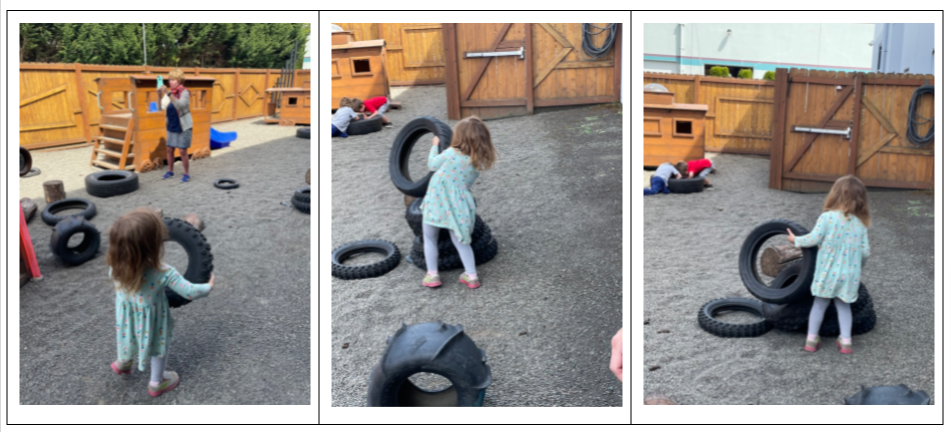
Sarah saw a small stack of 4 tires that she called “a tower!” and wanted “to make the tower bigger.” She moved through the playground, found a tire she wanted to use, picked it up, walked to the tower and placed it on top. And then....the tower tipped over. She pulled the tires out of the way, and placed them on the ground around her.
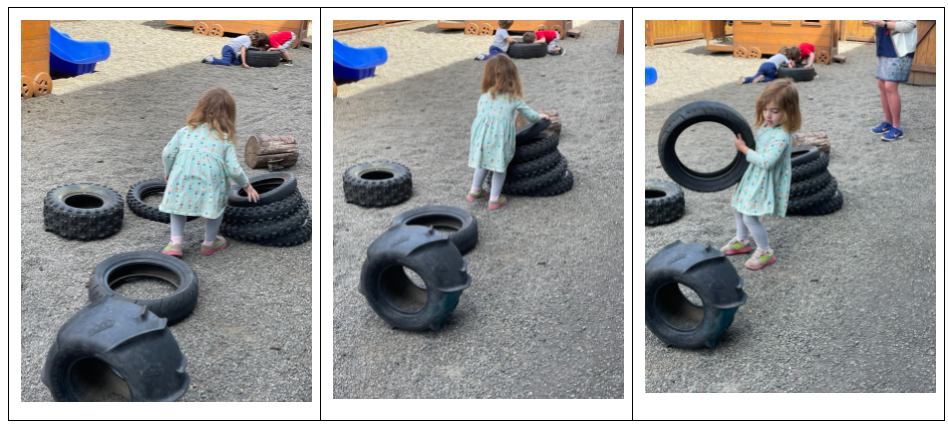
Sarah began to restack the tires, one on top of the other, and added the 5th tire she had carried over. The tower of tires remained standing!
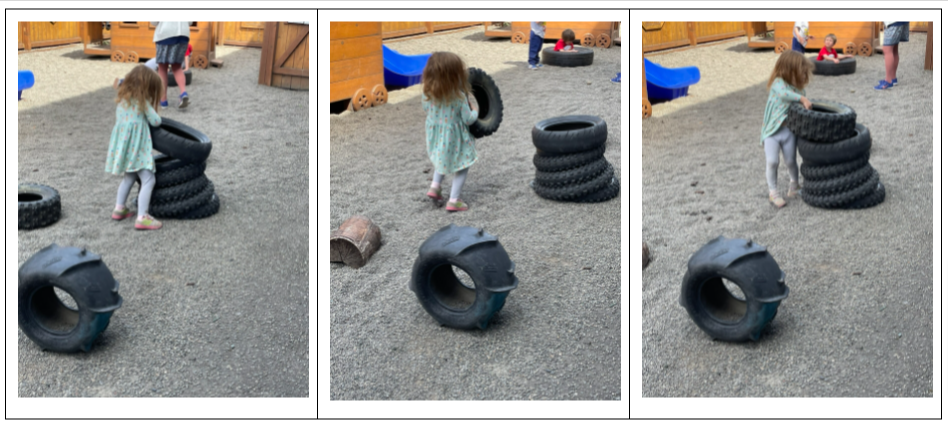
Sarah carried a 6th tire over and placed it on top. And then, a 7th, much larger and heavier tire, and placed it on the top of the tower, at a level now higher than her waist.
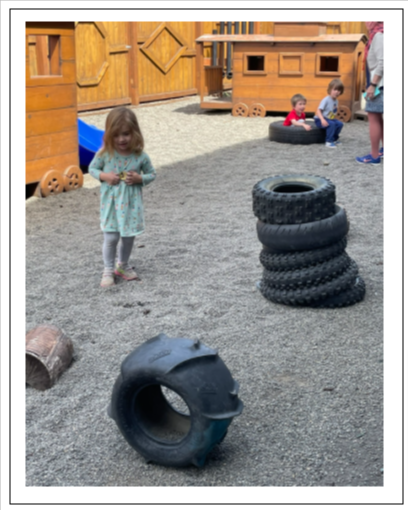
SUCCESS! Sarah had accomplished her goal of making the tower “bigger.”
And you might ask, “What did Sarah learn from this activity? What skills were developed?”
Sarah learned how to use her skills of observation to see what was in her environment that would interest her. She used memory recall to remember watching other children building with tires, and herself, building with a wide variety of materials at the Gan. Sarah used her creative imagination to envision a bigger tower. She used her critical thinking skills to know how to do that. Sarah used (and likely developed A LOT more strength) her muscles to carry, lift, and place tires on the tower. She developed and used her emotional regulation skills to deal with the disappointment of her tower falling down the second she placed a tire on top of it. She used her problem solving skills to figure out how to rebuild, what to move out of the way, which tires to use, and in which order. Sarah developed resilience and perseverance; she recovered from her initial disappointment very quickly, and recommitted herself to making the tower bigger. Sarah developed persistence; she carried on with her task even though it was a challenging, tiring one.
But there is an epilogue to this story...
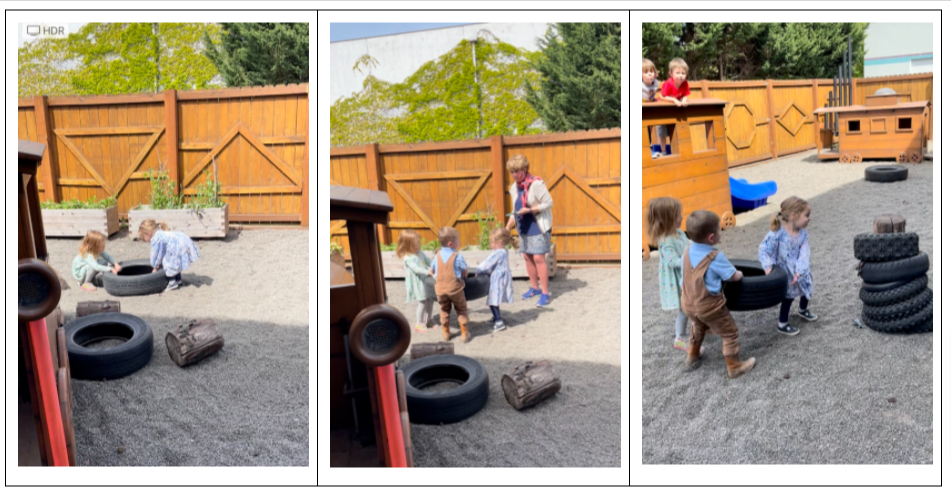
After stacking the 7 tires on her tower, Sarah began to walk around the playground. She came upon one of the largest and heaviest tires we have. She leaned down, grabbed it with both hands, and...nothing. It didn’t budge. At that moment, I observed as Kenya watched Sarah, walked over to the tire, leaned down, and grabbed it with her two hands. They both lifted with all their strength, managing to lift it about an inch off the ground. Enter Hugo. He happened to be watching the 2 girls, walked right over, leaned down, and all 3 grabbed the tire. SUCCESS! They lifted and hauled the tire across the playground, with smiles on their faces!
These 3 three-year olds not only did some heavy lifting and carrying during their free play, they did something much more profound. Sarah, Kenya and Hugo had the time and opportunity to freely explore and play as they wished; they chose to work together, demonstrating kindness, thoughtfulness, cooperation and teamwork.
As Morahs, we wholeheartedly support some Learning Circle story, song and discussion times each day, for a variety of reasons. And we spend time each day role-modelling social/emotional concepts, language and vocabulary, as ways to work with others. We introduce books, songs, and materials that we have carefully and purposefully chosen, to create appealing and challenging activities. We give direct instruction when children require some help working out a problem, or learning how to do a brand new (to them) task. However, it’s in times of unstructured, self-directed free play where children have the time and freedom to put all that they are learning into practice, to explore, experiment, create, try, fail, try again, take risks, and experience and develop the vast array of skills mentioned in this post.


